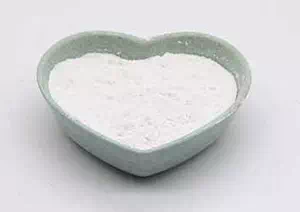All Categories


D-Tartaric acid CAS 147-71-7, D-Tartaric acid, CAS 147-71-7
D-tartaric acid (147-71-7), as a natural dextrorotatory organic acid, its core value lies in:Versatility: From food acidification to electronic materials, relying on its strong acidity and complexing ability;
CAS : 147-71-7
Formula : C4H6O6
Mol. wt. : 150.09
EINECS : 205-695-6
| CAS | 147-71-7 |
| Molecular formula | C4H6O6 |
| Molecular weight | 150.09 |
| EIENCS | 205-695-6 |
| Form | Crystals or Crystalline Powder |
| Melting point | 172-174 °C(lit.) |
| boling point | 191.59°C (rough estimate) |
| Density | 1,8 g/cm3 |
| Solubility | water: soluble100mg/mL, clear, colorless |
| PKA | 3.0, 4.4(at 25℃) |
| Color | White |
| Storage temp |
D-tartaric acid (147-71-7), as a natural dextrorotatory organic acid, its core value lies in:
Versatility: From food acidification to electronic materials, relying on its strong acidity and complexing ability;
Irreplaceable in medicine: Highly efficient chiral disintegrators, promoting the advancement of drug purification technology;
Safety first: Strict protective measures must be taken during operation to avoid inhaling dust or skin contact.
Food industry: Acidifiers (for beverages and jams), leavening agents (for beer foaming), regulating acidity and extending shelf life
Pharmaceutical industry: Drug dispersants, laxatives (potassium sodium tartrate), diuretics, chiral separation, regulating fluid balance
Chemical Engineering and Materials: Dye mordants (used in combination with tannin), metal polishes, epoxy resin curing accelerators, enhancing color fastness, and removing metal oxides
Electronics industry: Piezoelectric crystal materials (sensors, filters), utilizing the piezoelectric response of crystals
Environmental protection and scientific research: Adsorbents for wastewater treatment, chromatographic analysis reagents, chelating heavy metal ions
Toxicity data:
Intravenous injection of LD₅₀ in mice: 485 mg/kg, which is moderately toxic.
Irritating to the skin, eyes and respiratory tract (R36/37/38).
Operation protection:
Dust masks, goggles and acid and alkali resistant gloves should be worn. Ventilation equipment should be provided in the operation area.
Storage requirements:
Store in a sealed, light-proof container in a dry place below 25°C, away from oxidants
* Prompt reply and 24 hours online, professional team to provide best price and high quality product.
* Sample testing support.
* Every batch of products will be tested to ensureits quality.
*The packing also can be according the customers` requirment.
*Any inquiries will be replied within 24 hours.
*we provide Commerical Invoice, Packing List, Bill of loading, COA , Health certificate and Origin certificate. If your markets have any special requirements, let us know.